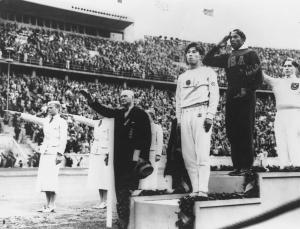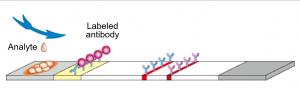In the previous edition, we dealt with Deoksugung1 as a special feature on palaces. We will now introduce three other palaces – Gyeongbokgung, Changgyeonggung, and Changdeokgung. Since this May Edition’s keyword is ‘Twins’, the reason we chose these palaces is that they have similarities in terms of their functions and history. Perhaps many Koreans, including us, have learned or heard about these palaces themselves, but they will not know about them in detail. We hope that the readers learn about their similar and different aspects through this article.
1"Deoksugung" refers to Deoksu Palace, as "gung" means "palace" in Korean.
2The words ended with Jo and Jong are the appellations or pen names granted after the king died. There are many standards to determine Jo or Jong. Sometimes, this standard is not applied depending on the situation, such as an intervention by the king. But most cases do follow this rule; ‘Jo’ is used when a king makes an enormous contribution to Joseon, while Jong is given to a virtuous king.
About the History of Gyeongbokgung
Gyeongbokgung was the main palace of the Joseon Dynasty. It was named by Jeong Dojeon, a founding contributor of Joseon. Its name means “enjoying big fortune”. From the rule of the Saejong2, Gyeongbokgung was used as the main palace. Saejong let the scholars at Jiphyenjeon name the gates of it. In the palace, there were not only spaces for political affairs, living spaces, and gardens for royalty but also several small palaces for the crown princes and queens.
There was a series of fires in 1592, and Gyeongbokgung received severe damage in that one year. Particularly, it underwent further damage during the Japanese invasion of Korea, so other kings after the invasion chose to live in Changdeokgung. Many people at that time thought that it was too dangerous to live in places that could so easily catch fire.
During the rule of the Gojong, his father regent Heungseon decided to rebuild Gyeongbokgung to strengthen the royal authority because Gojong had weak power as a king. Moreover, the Japanese tried to eliminate Korean pride, so they built the Japanese Government-General of Korea to cut off Koreans’ spirit during the Japanese Colonial Era. As such, we can find that Gyeongbokgung was the symbol of the Joseon Dynasty of Koreans themselves. Gyeongbokgung not only showed our tough history but also a national characteristic of loving peace and not succumbing to oppression.
Taejo (1395) Foundation of Gyeongbokgung with Jongmyo Shrine
Saejong (1427~1434) Construction of new structures, such as Gyeonghoeru Pavilion or reconstruction of such structures as Sinmumun Gate
Jungjong (1543) The conflagration at the palace of the crown prince
Myeongjong (1553) Destruction of Gangnyeonjeon, Sajeongjeon Hall and so on by fire.
Seonjo (1592) Destruction of Gyeongbokgung by the Japanese invasion of Korea
Gojong (1865) The rebuilding of Gyeongbokgung
(1868) The connection between Changdeokgung and Gyeongbokgung
(1876) Destruction of many structures by fire
(1915) The completion of the Museum of the Japanese Government General of Korea
(1918) The disposal and removal of parts of Gyeongbokgung
(1968) The restoration of Gwanghwamun Gate
(1997) The demolition of the Japanese Government-General of Korea.
(2010) The rebuilding of Gwanghwamun Gate
About the History of Changdeokgung
Located under Bukak Mountain, Changdeokgung is called “twins palace”, along with Changgyeonggung. Changdeokgung was also the main palace of the late Joseon period where most kings stayed for the longest time. In the early Joseon period, it was the second palace next to Gyeongbokgung. Although it lost its status as a main palace after the restoration of Gyeongbokgung, it cast its fate with the Korean Empire, the last dynasty of Korean history, as an imperial palace. Under the Japanese occupation, Changdeokgung was influenced by modernization, so the main buildings and interior were Westernized. Today, we can see that there are lightbulbs where kings used to work. After the establishment of the Government of South Korea, the Korean Empire’s imperial families, such as Empress Sunjeong, Prince Youngchin, and Princess Deokhye, stayed there. From the foundation of the Joseon Dynasty in 1392 to the fall of the Korean Empire in 1910, Changdeokgung was the only palace that existed the entire time.
Compared to Gyeongbokgung, whose buildings are vertically symmetrical to represent the authority of the king as people at that time believed the center of bilateral symmetry represented the king, Changdeokgung faithfully follows the geographical features because the slopes within it were very important for our ancestors who wanted to keep the geomantic traditions. This placement is a unique Korean arrangement unfound in other similar Asian palaces. Changdeokgung was registered as a UNESCO Heritage of the World site in 1997 as it is well preserved and has high value for its harmonious arrangement and Korean sentiment.
Taejong (1404) Preparation for the establishment of Changdeokgung
Seonjo (1592) Destruction of all palaces including Changdeokgung
Gwanghaegun (1609) The completion of the rebuilding Changdeokgung
Injo (1623) Enthronement of Injo subsequent to dethronement of Gwanghaegun and destruction of the palace due to fire (Coup)
Injo (1647) Restoration
Gojong(1884) Breaking out of Gapsin Coup
Sunjong (1907) Becoming an imperial palace
(1912) Open to the public by Japan
(1917) Burned down by fire
(1997) Registered as a UNESCO Heritage of the World site
About the History of Changgyeonggung
King Seongjong built Changgyeonggung for his grandmother Queen Jeonghui, his aunt Queen Ansun, and his mother Queen Sohye. In the early Joseon Period, it was not frequently used like Gyeongbokgung was. But, after the invasion by Japan in 1592, it was rebuilt along with Changdeokgung. Its main role was to supplement the insufficient room for the royal families. It was also the place where many kings such as Jeongjo and Heonjong were born. During the rule of Injo and Sunjo, there were also enormous fires like other palaces – Gyeongbokgung and Changdeokgung – but it was restored not long after.
Changgyeonggung was the place where many tragic incidents happened. During the rule of Sukjong, Jang Heebin took poison because she had slandered Queen Inhyeon. During the rule of Yeongjo, his son Prince Sado was put to death in a wooden rice bin in front of the council hall Munjeongjeon. In the Japanese colonial era, the Japanese turned Changgyeonggung into a zoo and botanical garden. After independence, that amusement park lasted for a while, but it was moved to Seoul Grand Park. Henceforth, the Korean government decided to get rid of many of the vestiges of Colonial Japan and restore the palace based on historical research. The government has done its best to restore the original appearance. Like Gyeongbokgung, it was directly damaged and numerous items of its precious historical heritage were lost during Japan’s colonization of Korea.
Sejong (1418) Building Suganggung to respect his father, Taejong
Seonjo (1592) Destruction because of the invasion of Japan
Gwanghaegun (1616) Rebuilding the Main Gate Honghwamun, the Main Hall Myeongjeongjeon, and the Council Hall Munjeongjeon.
Injo (1623) Destruction of several buildings due to the enthronement.
Injo (1624) Deconstruction of Yanghwadang, Hwangyeongjeon and so on due to Yi Gwal’s rebellion
Injo (1633) Restoration
Jeongjo (1790) The fire on Tongmyeongjeon
Sunjo (1834) Burned down several buildings
Cheoljong (1857) Fire in several buildings
Gojong (1877) The repair
Sunjo (1909) Building the zoo and botanical garden
(1950) The closing because of the Korean War
(1954) The opening after the end of the war
(1963) Registered as Historical Site No.123
(1985) The start of the restoration
Hanyang, Joseon’s name for Seoul, has long performed as the center of industry, politics, economy, and culture. When we see the remaining palaces, we can feel the great history our ancestors achieved and the harmonization of the future and the present. Although these palaces underwent many difficulties such as fire and forced occupation, they steadily stand there now. In this aspect, Koreans who have overcome historical hardships resemble the palaces. It will be very worthy to trace our roots and think about our history which will continue forever.
Han Suji suzyhan96@gmail.com
<저작권자 © 홍익대영자신문사, 무단 전재 및 재배포 금지>





